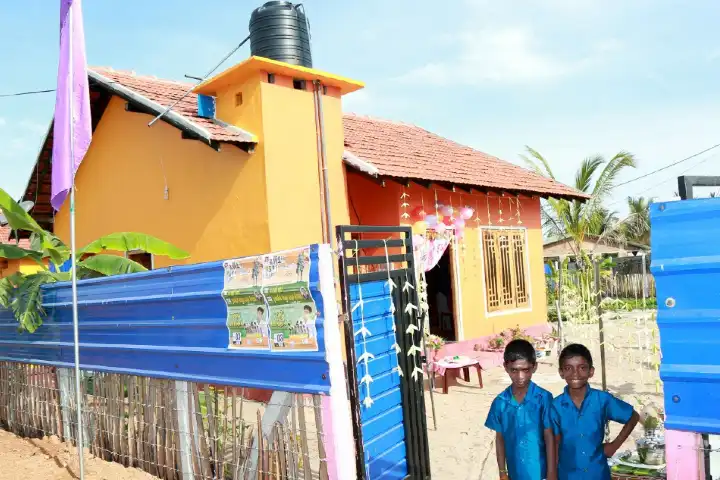India’s decision to build another 10,000 houses across Sri Lanka as part of the flagship Indian Housing Project is expected to further cement ties between the neighbours.
The third phase of the Indian Housing Project aimed at rehabilitating the Tamil population that was displaced due to the long drawn civil war is nearing completion. About 4000 houses have been built under the third phase.
“I am happy to share that Phase III is nearing completion, with 3,700 houses already handed over to the beneficiaries. We are laying the foundation stone for the construction of the first lot of 10,000 houses under Phase IV of the project today, as part of NAAM 200,” Finance Minister Nirmala Sitharaman who participated at the NAAM 200 in Colombo said. Naam 200’ marks the 200th anniversary of the arrival of the Indian Origin Tamil (IOT) people in Sri Lanka.
The project was initially started in June 2010. As many as 1,000 houses were built. The first phase was completed in July 2012.
The second phase launched on the birth anniversary of Mahatma Gandhi on which envisaged construction of 45,000 houses in the Northern and Eastern Provinces was completed in December 2018.
“Such projects that touch the lives of the people can go a long way in creating goodwill. At present, India enjoys credibility and unparalleled goodwill in Sri Lanka. India has been assisting Sri Lanka from the time the economic crisis broke out,” Dhanuraj D, chairman, Centre for Public Policy Research (CPPR) told India Narrative.
Foreign policy watchers said that India is expanding soft power as it positioned itself as the voice for the Global South especially in the wake of the G20 presidency.
Sri Lanka, home of 22 million, is also trying to attract investments from India. Besides housing, India has assured the beleaguered island nation of continued assistance required to rebuild itself.
Sources said that New Delhi needs to increase its presence even in the small and medium enterprises and sectors such as the fisheries. The fisheries sector employs about 2.5 million people directly and indirectly. The sector is also important for the country to maintain its food supplies as well as boost exports.
Sri Lanka’s GDP in the second quarter contracted 3.1 percent in the second quarter of 2023 against the same period last year. This is the sixth consecutive quarter of contraction.
“While India has been extending crucial support to Sri Lanka after its default, New Delhi must now focus more on helping Colombo revive its domestic economy in a sustainable manner with more investments along with sharing of knowhow. This will rebuild the lives of Sri Lankans and naturally strengthen India Sri Lanka relations,” Dhanuraj said, adding that people to people connect between New Delhi and Colombo along with a thrust on the tourism sector will be key.
Meanwhile, speaking at the NAAM 200 event, Sri Lankan President Ranil Wickremesinghe said that Colombo is fully committed to integrate people of Tamil origin living in the hills into Sri Lankan society, with the aim of advancing the nation by uniting all its citizens.
Also read: Will IMF fund Sri Lanka after China’s opaque debt-restructuring deal with Colombo?




















